This first table shows the HWLabs Nemesis 140 GTS’ Watts/10 Delta Temp results with our flow rate of 1.0 GPM.
 Using this data we can effectively show percentage gains/losses relative to a reference point. It’s an interesting way to show gains/losses while changing a variable.
Using this data we can effectively show percentage gains/losses relative to a reference point. It’s an interesting way to show gains/losses while changing a variable.
So, let’s focus on 1300 RPM as our reference and see how much gain or loss in performance we get by changing fan speed.
In push only we see a larger percentage drop from 1300 rpm to 750 rpm. This indicates that at 750 rpm the fan might not yet move enough air through the dense (yet thin) core to be efficient.
So from the data above we have a good idea of how the Nemesis 140 GTS radiator performs relative to itself. But there is a large selection of 140mm radiator models to choose from.
We have some other 140mm radiators with thermal testing completed. So let’s put the Nemesis 140 GTS’ results into some comparison charts. The Nemesis 140 GTS is a thin radiator and is able to fit into small spaces. Push Only is the most likely installation scenario for the radiator.
Before we delve in it must be said that this is the only slim 140mm radiator of the test group. Therefore we should not expect it’s results to be on par with results achieved by the thicker radiators tested here. Most of these competitors are twice as thick as the Nemesis 140 GTS.
Push Only Data vs Competition
Let’s focus on the Push Only results for now and come back to the Push/Pull data later.
Starting with 750 RPM let’s see how the Nemesis 140 GTS performs comparatively.
Results are always close at this data point, but here we see a clear winner. Of special interest is the Nemesis 140 GTS out performing it’s thicker sibling. Finishing just ~8% behind the wining rad which is 100% thicker is a great result for the Nemesis 140 GTS.
Now let’s look at 1300 rpm:

At 1300 rpm Push Only the Nemesis GTX which placed last at 750 rpm shoots out to take the lead. There is something about the Nemesis GTX rads where they perform poorly at low rpm at Push Only. The Nemesis 140 GTS finished ~13% behind the leader. The leader is again twice as thick and is ~33% more expensive than the GTS.
At 1850 rpm the Nemesis 140 GTS falls further behind the competition. Again given it’s size this is no surprise. It’s bigger stable mate, the Nemesis GTX, is dominating here. But the performance variation of the other three radiators is quite close. On average the Nemesis 140 GTS is only ~10% behind these three radiators.
The push only comparison results for the Nemesis 140 GTS were excellent given it’s size. We don’t expect it to be as competitive in push/pull because the thicker rads should benefit much more from the the second fan.
Push/Pull Data vs. Competition
Let’s now look at the Push/Pull results and see how the Nemesis 140 GTS compares.
Again the 750 rpm first:
The Nemesis 140 GTS 140 turns out a respectable result and isn’t too far from the thicker competition. It takes 5th place ~8% behind the winning rad.
Let’s move to 1300 rpm:
 At 1300 rpm Push/Pull the Nemesis 140 GTS performance increase seems to have plateaued. Yet it is still just ~9% behind the 3 radiators above it.
At 1300 rpm Push/Pull the Nemesis 140 GTS performance increase seems to have plateaued. Yet it is still just ~9% behind the 3 radiators above it.
Now 1850RPM:
At 1850 rpm Push/Pull the Nemesis 140 GTS has fallen further behind the leader. But it reigns in some of the gap between it and two of the radiators in front of it.
Let’s now combine the Push Only and Push/Pull results of our 1.0 GPM flow rate tests. Sometimes these combined plots show up some points of interest.
Again the 750 rpm first:
 As noted earlier the GTS beats out the GTX in Push Only at 750 rpm.
As noted earlier the GTS beats out the GTX in Push Only at 750 rpm.
However, at 1300 rpm the GTX in Push Only Beats out the GTS in Push/Pull.
At 1850, there are no surprises given what we have already reviewed.
Here is one last alternate view of the data before we move onto the summary. This time the data is plotted as extrapolated curves.
This plot perhaps best shows just how close the results are, particularly at the low fan speeds.
In the push/pull setup we see a bit more separation occurring. As the fan speeds are increased the different core designs show their strengths and weaknesses.
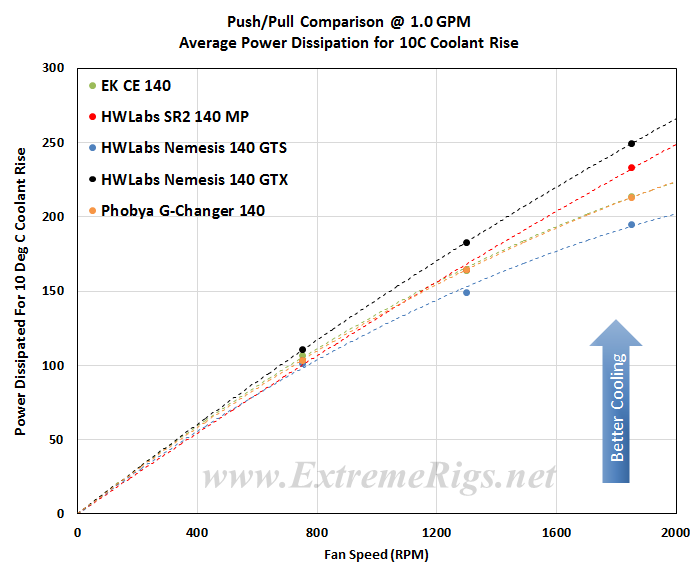
From all the test results we created “Average Performance Factor” charts for both Push and Push/Pull. We then made a combined plot of the average called the “Master Performance Factor”. The radiator with the best cooling ability (W/10ΔT) at each rpm was awarded a score of 100. Each other radiators W/10ΔT result was scored as percentage of the top performer.
This way of looking at the comparison takes away any advantages that a radiator may have at higher or lower fan speeds and looks at an overall average. While this appears fair it does tend to favor those radiators that are all-rounders and those radiators which do very well at high RPM. Most users should be more focused on their specific use case.
Here are the Nemesis 140 GTS percentage scores at each data point:
 This can give a false impression that the Nemesis 140 GTS performed poorly as the air flow was increased. Instead it is probably more accurate to say that another radiator’s performance improved as the air flow increased.
This can give a false impression that the Nemesis 140 GTS performed poorly as the air flow was increased. Instead it is probably more accurate to say that another radiator’s performance improved as the air flow increased.
The percentage numbers in the table offer another way of looking at the Nemesis 140 GTS’s results. But for our scoring system we need a way to reduce the categories while retaining the data. To do this we average the results for each fan assembly type giving us Averaged Performance Factors. We calculate this for push only, push/pull and finally an average of everything.
Firstly – the Push Only APF:
The Nemesis 140 GTS’ Push Only APF score of 87.4 was ~10% behind the 2 leaders and ~5% behind the equal 3rd place rads. We believe this to be an excellent result as 3 of the 4 other rads are twice as thick as the GTS.
Now the Push/Pull APF:
The Nemesis 140 GTS was never expected to be truly competitive in the Push/Pull thermal performance category. The thinner core just does not have the cooling potential of the competition.
Finally we created the Master Performance Factor which is calculated from the averaged results of all the tests: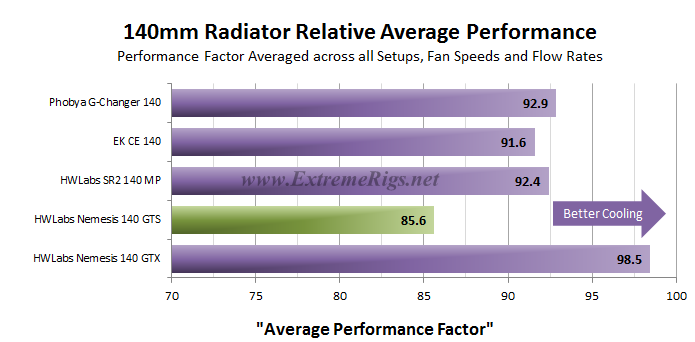 Overall the Nemesis 140 GTS placed last in our thermal tests. However this was not a “fair” comparison and so it’s wise to delve a bit deeper to get the details instead of just reading the headlines. In otherwords this was actually a great result for such a slim radiator.
Overall the Nemesis 140 GTS placed last in our thermal tests. However this was not a “fair” comparison and so it’s wise to delve a bit deeper to get the details instead of just reading the headlines. In otherwords this was actually a great result for such a slim radiator.
Next up – Summary!








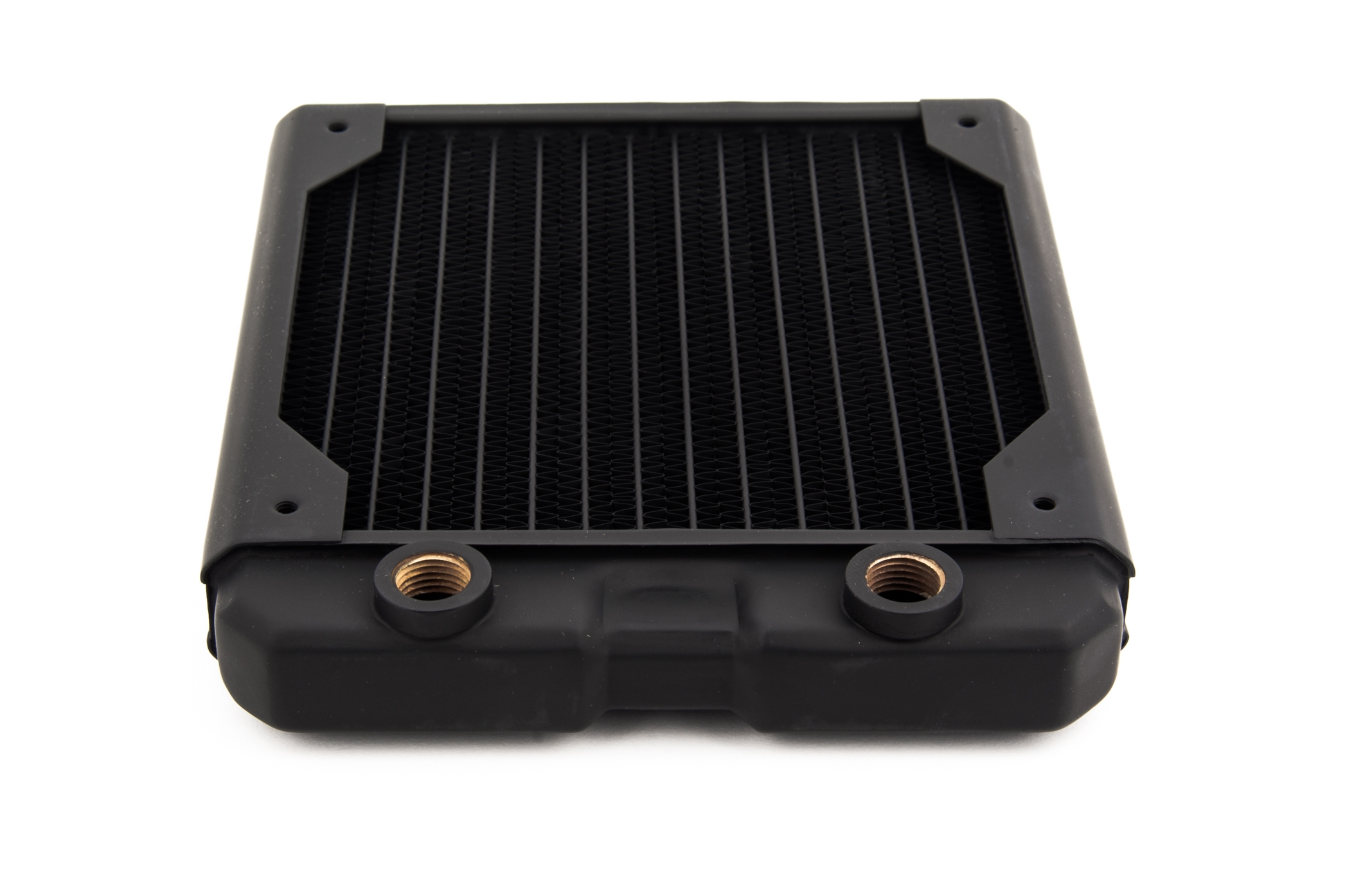







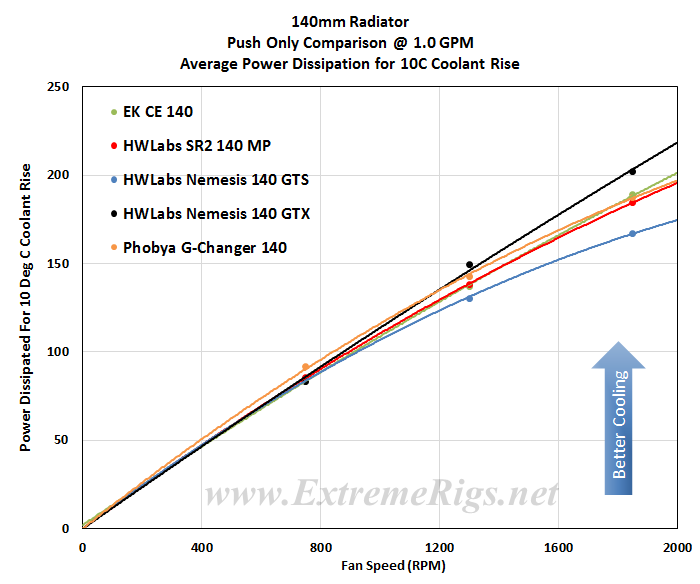
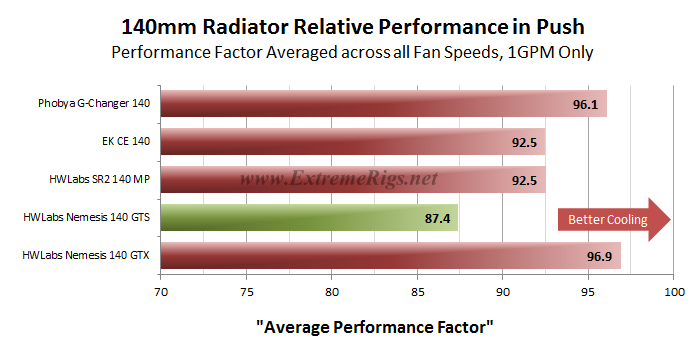
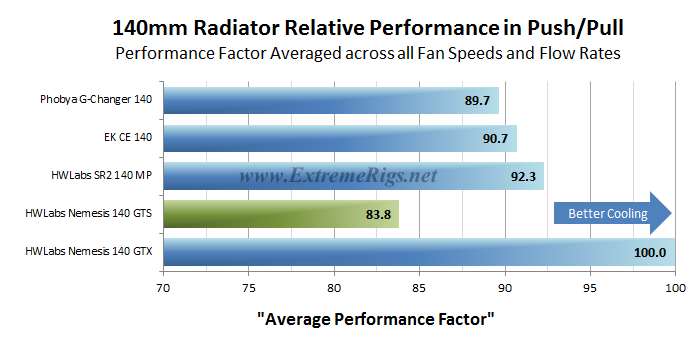



Good read as always, I feel pretty confident that my choice of the 420GTS is a good one for my build despite requiring some case mods.
Comments are closed.